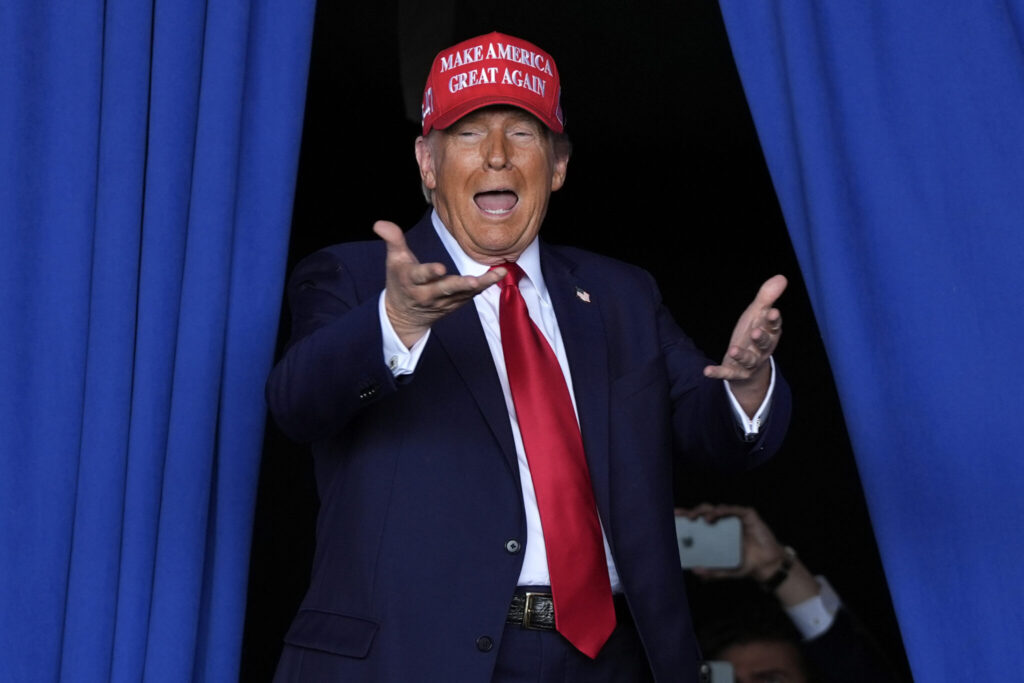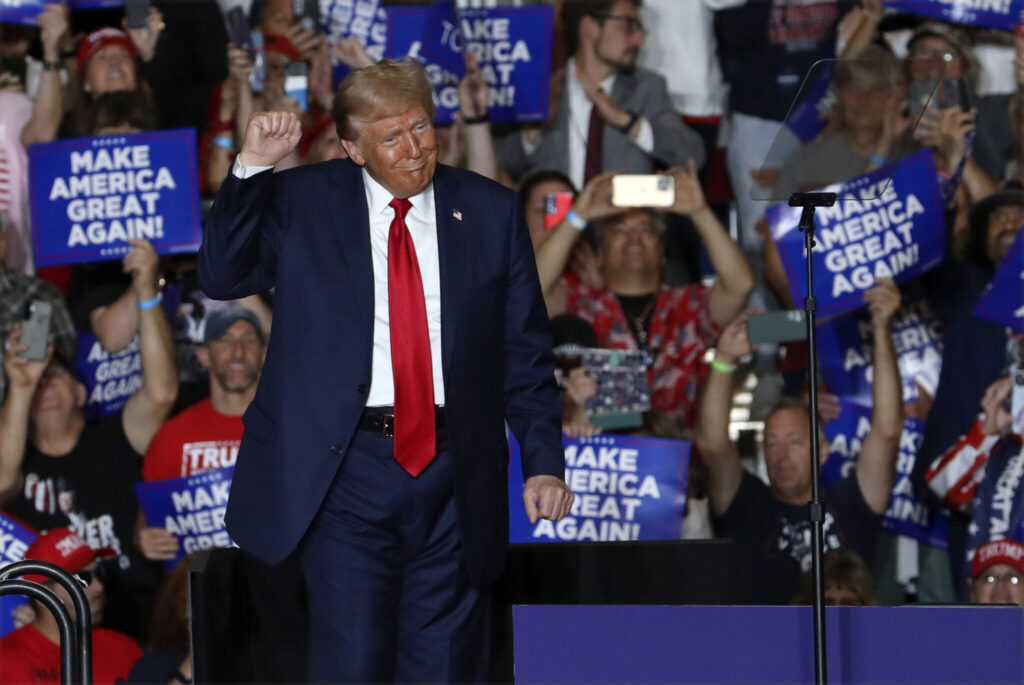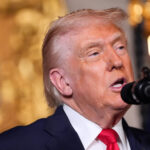Trump media coverage/ 2024 election media challenges/ fact-checking Trump/ Trump live coverage debate/ sanewashing Trump/ Newslooks/ NEW YORK/ J. Mansour/ Morning Edition/ Nearly a decade into Donald Trump’s political career, media outlets still grapple with how to cover his unconventional style. The Trump approach challenges journalistic norms, prompting debate over strategies like fact-checking, “sanewashing,” and the balance between live coverage and context.

Media Faces Challenges Covering Trump in the 2024 Election – Quick Looks
- Sanewashing Debate: Journalists face pressure to clarify or polish Trump’s statements.
- Fact-Checking Dilemma: Media outlets differ on how to fact-check Trump’s claims.
- Live Coverage: Networks weigh the value of broadcasting Trump unfiltered.
- Media Complexity: Trump’s style continually tests traditional news processes.
Media Struggles to Cover Trump’s Unconventional Campaign Style
Deep Look
As the 2024 election cycle progresses, the media’s coverage of Donald Trump, now the Republican presidential candidate for a third time, remains a significant challenge. Almost a decade after Trump first entered the political scene, there is little consensus among news outlets on the most effective way to cover his unconventional approach. Journalists grapple with issues such as “sanewashing”—the tendency to polish or refine Trump’s statements—and the ongoing debate over fact-checking and live coverage.
The Debate Over ‘Sanewashing’ Trump
Media critic Parker Molloy coined the term “sanewashing” this year, describing how some journalists reframe or refine Trump’s statements to make them sound more conventional or coherent. For example, she cites CNN’s simplified reporting on a recent social media post by Trump that blended various claims about the “radical left” and “fake news.” This distilled reporting, she argues, created a narrative that could mislead readers about Trump’s true statements.
Molloy warns that such reporting can create an “alternative narrative” that may confuse voters or downplay the more extreme elements of Trump’s rhetoric. During a recent rally in Wisconsin, for instance, Trump told supporters that undocumented immigrants “will walk into your kitchen, they’ll cut your throat.” This alarming statement received limited coverage from mainstream outlets like The New York Times and The Washington Post, which briefly noted Trump’s general remarks on immigration but omitted the specific claim.
Media commentators suggest that this selective reporting reflects the “banality of crazy,” a term political scientist Brian Klaas uses to describe how journalists become desensitized to Trump’s inflammatory statements, treating them as routine rather than noteworthy.
The Challenge of Quick News Cycles
Trump’s rapid-fire statements and shifting topics often clash with the traditional, concise format of daily news reporting. Kelly McBride, a senior vice president at the Poynter Institute, highlights the difficulty of providing meaningful, in-depth analysis within the fast-paced news cycle. She argues that while daily news updates serve dedicated readers, they may not help the broader public fully understand the implications of Trump’s candidacy.
Though Trump’s critics frequently accuse the media of insufficient scrutiny, major outlets have pursued numerous in-depth stories on Trump’s campaign and personal history. For example, The New York Times recently analyzed changes in his speech patterns over time, while The Washington Post explored Trump’s references to mental fitness, particularly in relation to his father’s battle with Alzheimer’s. Despite these efforts, media critics argue that such coverage hasn’t yielded the impact they desire, with some Trump supporters maintaining firm loyalty and dismissing unfavorable reports.
Journalism professor Tom Rosenstiel from the University of Maryland believes that critics often expect the media to convince Trump supporters to change their views, a goal he views as outside journalism’s traditional role. “The people who are infuriated by Trump cannot believe his success and want the press to persuade people who like him that they’re wrong,” Rosenstiel explains. “But the press can’t do that.”
Fact-Checking: To Do or Not To Do?
One of the central issues in covering Trump is how—and when—to fact-check his statements. Networks have taken different approaches, especially during live debates. During the most recent debate season, CNN decided against real-time fact-checking during Trump’s session with President Joe Biden, but ABC moderators corrected him several times during a September debate with Vice President Kamala Harris, sparking backlash from Trump supporters.
As the fact-checking industry grew during Trump’s time in office, with the number of dedicated websites increasing from 63 in 2016 to 79 in 2020, its limitations became evident. Fact-checking has become divisive, with many Trump supporters either disregarding corrections or avoiding such content altogether. Rosenstiel stresses that simply pointing out inaccuracies isn’t enough; journalists must explain why a claim is inaccurate in a clear, accessible manner.
Live Coverage: A Return to Unfiltered Trump?
Networks continue to struggle with the question of how much unfiltered coverage to provide. In the early days of Trump’s 2016 campaign, CNN and other major outlets broadcasted his rallies live, sparking regret among some journalists who later felt this gave Trump undue exposure. Since then, networks have aired his rallies more selectively, often opting for short clips or condensed summaries.
Interestingly, some experts now advocate a return to showing Trump’s statements without heavy filtering, allowing viewers to evaluate his words directly. Poynter’s McBride praised The 19th, a nonprofit newsroom, for running a full, unedited 365-word quote from Trump on child care, describing the value of presenting “Trump in the raw.” Rosenstiel agrees that providing Trump’s statements directly can offer voters a clearer perspective on his positions.
The Search for a Balanced Approach
Reflecting on her initial column about “sanewashing,” Molloy noted the challenges in covering Trump fairly and effectively without obscuring or distorting his statements. She believes that while Trump’s rhetoric often pushes the boundaries of traditional reporting, it also requires news outlets to resist falling into polarized narratives that either sanitize or sensationalize his words.
“People can view his style as brilliant, or as bizarre—it’s likely a bit of both,” Molloy concludes. For the media, balancing comprehensive coverage with clarity remains a complex task as they attempt to adapt to the unique dynamics of the Trump era.







